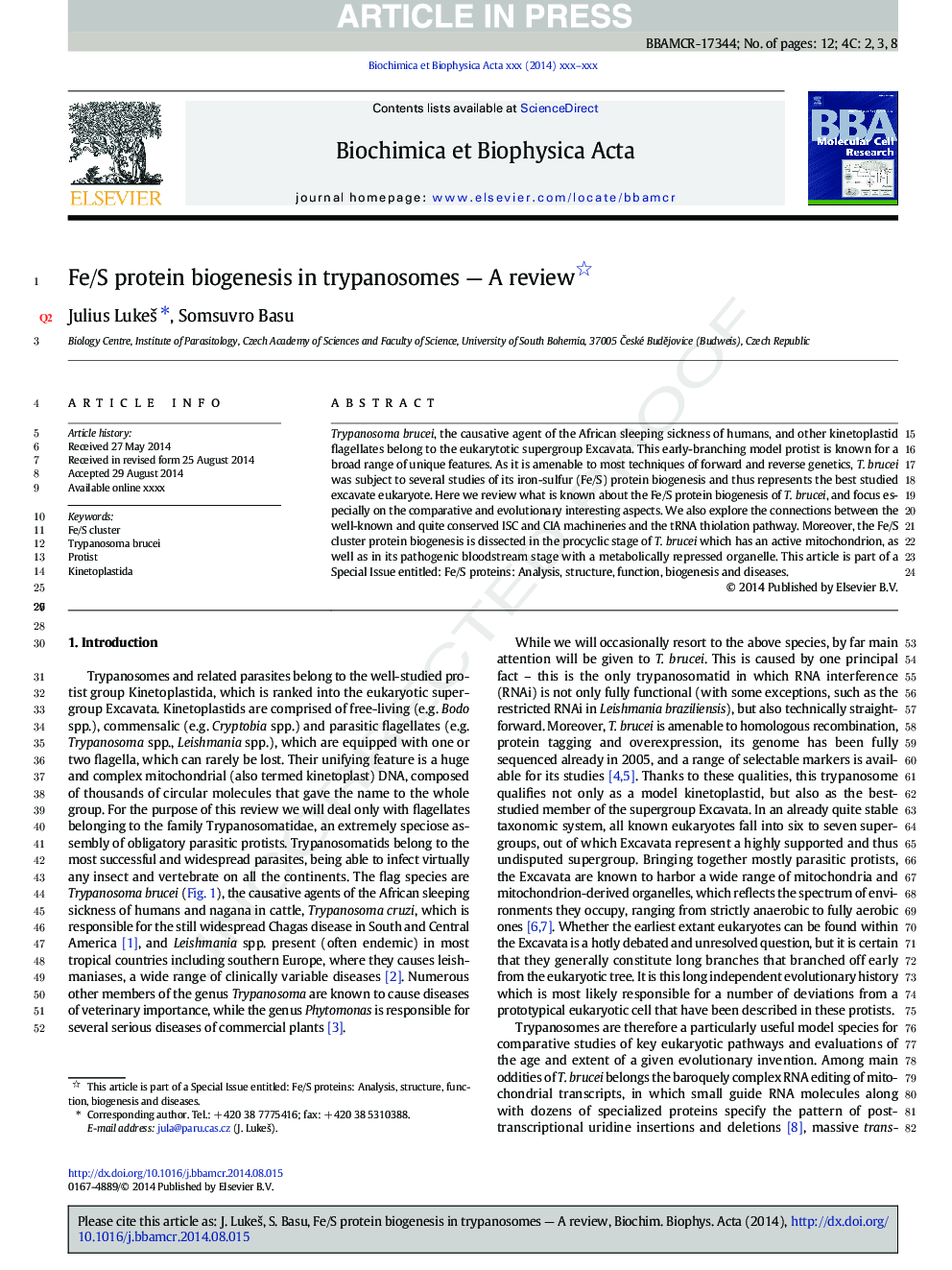| Article ID | Journal | Published Year | Pages | File Type |
|---|---|---|---|---|
| 10802011 | Biochimica et Biophysica Acta (BBA) - Molecular Cell Research | 2015 | 12 Pages |
Abstract
Trypanosoma brucei, the causative agent of the African sleeping sickness of humans, and other kinetoplastid flagellates belong to the eukarytotic supergroup Excavata. This early-branching model protist is known for a broad range of unique features. As it is amenable to most techniques of forward and reverse genetics, T. brucei was subject to several studies of its iron-sulfur (Fe/S) protein biogenesis and thus represents the best studied excavate eukaryote. Here we review what is known about the Fe/S protein biogenesis of T. brucei, and focus especially on the comparative and evolutionary interesting aspects. We also explore the connections between the well-known and quite conserved ISC and CIA machineries and the tRNA thiolation pathway. Moreover, the Fe/S cluster protein biogenesis is dissected in the procyclic stage of T. brucei which has an active mitochondrion, as well as in its pathogenic bloodstream stage with a metabolically repressed organelle. This article is part of a Special Issue entitled: Fe/S proteins: Analysis, structure, function, biogenesis and diseases.
Related Topics
Life Sciences
Biochemistry, Genetics and Molecular Biology
Biochemistry
Authors
Julius Lukeš, Somsuvro Basu,
